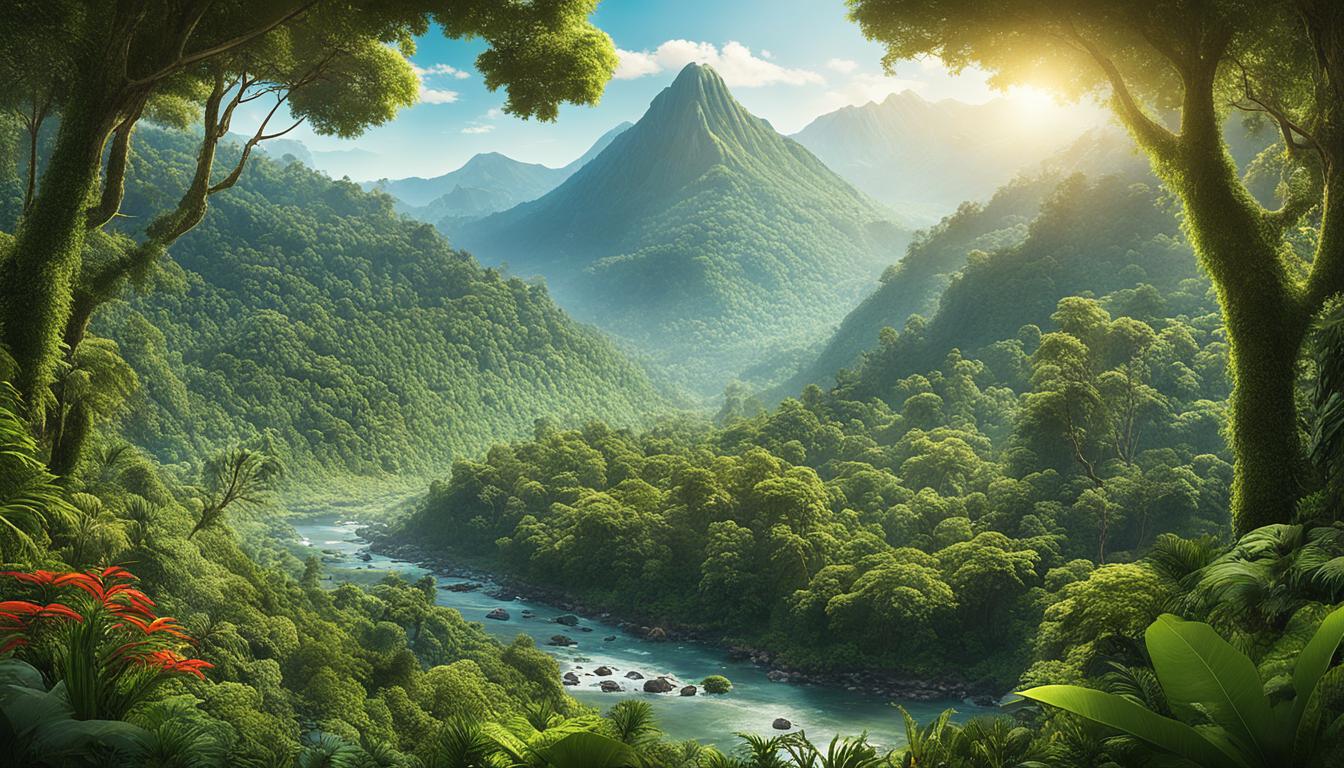Equatorial Guinea Sacred Natural Sites and Biodiversity
Did you know that Equatorial Guinea, a small country on the west coast of Central Africa, is home to a vast array of sacred natural sites and rich biodiversity? These sites, spread across the mainland and islands of Equatorial Guinea, offer a unique blend of culture and conservation.
Equatorial Guinea is part of the Guinean Forests of West Africa Biodiversity Hotspot, which stretches across West and Central Africa. This hotspot is renowned for its astonishing levels of species richness and endemism. It boasts approximately 9,000 species of vascular plants, 416 mammal species, 917 bird species, and 269 amphibian species, making it an ecological treasure trove.
However, these biodiverse areas face significant threats such as deforestation, hunting, and the impacts of climate change. The challenges are immense, but with concerted efforts and international cooperation, Equatorial Guinea can preserve its sacred natural sites and safeguard its rich biodiversity for generations to come.
Key Takeaways
- Equatorial Guinea is home to diverse sacred natural sites and a wealth of biodiversity.
- The country is part of the Guinean Forests of West Africa Biodiversity Hotspot, known for its high species richness and endemism.
- Deforestation, hunting, and climate change are among the threats facing Equatorial Guinea’s biodiversity.
- International cooperation and conservation initiatives are crucial in preserving Equatorial Guinea’s unique natural heritage.
- Education and awareness efforts play a vital role in promoting biodiversity conservation in the country.
The Guinean Forests of West Africa Biodiversity Hotspot
The Guinean Forests of West Africa Biodiversity Hotspot is a significant region for biodiversity conservation. Spread across the southern part of West Africa and into Central Africa, it encompasses a total area of 621,705 km2. This biodiversity hotspot is divided into two subregions, namely the Upper Guinean Forests and the Lower Guinean Forests.
These forested areas boast an impressive array of species, including an astonishing 9,000 species of vascular plants and a diverse range of terrestrial animals. Notably, the Guinean Forests of West Africa Biodiversity Hotspot also plays a critical role in primate conservation, serving as a priority area for several critically endangered and endangered primate species.
Despite its ecological diversity and significance, this hotspot faces numerous threats. Habitat loss, unsustainable logging, hunting, and the detrimental impacts of climate change are among the major challenges confronting the Guinean Forests of West Africa Biodiversity Hotspot.
The Upper Guinean Forests and the Lower Guinean Forests
The Guinean Forests of West Africa Biodiversity Hotspot is characterized by its division into two distinct subregions: the Upper Guinean Forests and the Lower Guinean Forests. These forested areas exhibit unique ecological characteristics and support a wide range of species.
The Upper Guinean Forests, located closer to the Atlantic coast, are known for their moist, evergreen forests. These forests are home to a rich variety of plant species and support a diverse array of wildlife, including several primate species. The region’s high rainfall and fertile soils contribute to the exceptional biodiversity found here.
The Lower Guinean Forests, situated further inland, are characterized by a transition from moist evergreen forests to semi-deciduous and dry forests. These forests exhibit a diverse range of ecological niches, providing habitat for numerous plant and animal species. The Lower Guinean Forests are also home to several priority areas for primate conservation.
The ecological diversity and unique characteristics of both the Upper Guinean Forests and the Lower Guinean Forests contribute to the overall richness and significance of the Guinean Forests of West Africa Biodiversity Hotspot.
Threats to Biodiversity in Equatorial Guinea
Equatorial Guinea’s rich biodiversity is facing significant threats from various factors. These threats pose a risk to the delicate balance of ecosystems and the preservation of unique species. Among the key threats are deforestation resulting from agricultural expansion, logging practices that are not sustainable, hunting and the trade of bush meat, industrial and artisanal mining, industrial development, climate change, and pollution.
One of the major consequences of these threats is the loss of over 85% of the native vegetation cover in the Guinean Forests Hotspot, which has a direct impact on the survival of numerous plant and animal species. Deforestation, in particular, has been driven by the expansion of agricultural activities, leading to the destruction of natural habitats that many species rely on to survive and thrive.
The high incidence of poverty, political instability, and civil conflict in the region further exacerbate the challenges faced in biodiversity conservation. These factors hinder effective conservation efforts by limiting the resources available and creating an environment that is not conducive to long-term sustainability.
Fortunately, efforts are being made to counter these threats and protect Equatorial Guinea’s unique biodiversity. One approach is through the establishment of protected areas, wildlife sanctuaries, and eco-heritage sites. These areas provide a refuge for endangered species, help preserve critical habitats, and promote sustainable land and resource management practices.
Additionally, initiatives aimed at promoting sustainable development and raising public awareness about the importance of biodiversity are crucial in combating these threats. By empowering local communities and fostering a sense of responsibility, Equatorial Guinea can work towards a future where both conservation and sustainable development go hand in hand.
Key Threats to Biodiversity in Equatorial Guinea:
- Deforestation due to agricultural expansion
- Unsustainable logging practices
- Hunting and trade of bush meat
- Industrial and artisanal mining
- Industrial development
- Climate change
- Pollution
Efforts to address these threats and preserve Equatorial Guinea’s biodiversity are crucial for the long-term sustainability of the country’s ecosystems and the protection of its unique flora and fauna.
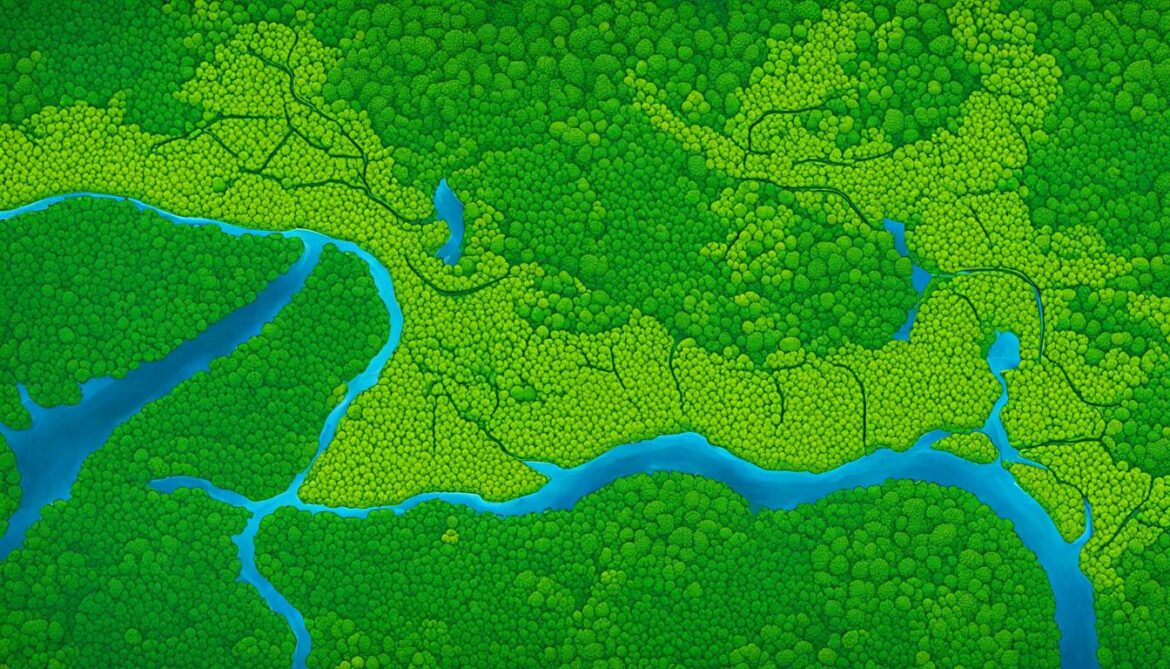
Previous Conservation Efforts in Equatorial Guinea
The Critical Ecosystem Partnership Fund (CEPF) has played a pivotal role in supporting conservation projects in Equatorial Guinea. From 2001 to 2011, CEPF generously provided a total of USD 8.3 million to conservation endeavors in the Upper Guinean Forests subregion. These investments have provided valuable lessons that shed light on effective conservation strategies.
- The importance of starting small: CEPF recognizes the significance of supporting emerging NGOs, providing them with the essential resources and guidance needed to make a positive impact in the field of conservation.
- The effectiveness of capacity building: By fostering mentoring relationships and empowering local organizations, CEPF has enabled capacity building, ensuring that conservation efforts are sustainable and impactful in the long run.
- The value of partnerships and networks: CEPF understands that collaboration is crucial for successful conservation projects. By forging partnerships between NGOs, government agencies, and local communities, CEPF has fostered a collaborative environment for the betterment of Equatorial Guinea’s precious ecosystems.
- The need for innovative communication strategies: CEPF recognizes that effective communication is key to raising awareness about the importance of conservation. By employing innovative strategies, such as digital media and community engagement programs, CEPF has successfully communicated conservation messages to a wider audience.
- The importance of community participation: CEPF understands that sustainable conservation cannot be achieved without the active involvement of local communities. By engaging and empowering communities, CEPF has fostered a sense of ownership and stewardship over Equatorial Guinea’s natural heritage.
- The significance of setting feasible objectives: CEPF emphasizes the importance of setting realistic and achievable goals for conservation projects. This approach ensures that efforts are focused and resources are used efficiently and effectively.
Furthermore, CEPF acknowledges that longer-term engagement and flexible grant sizes are vital for the success of conservation efforts in Equatorial Guinea. By providing continued support and adapting to the evolving needs of the conservation landscape, CEPF remains committed to safeguarding the country’s unique biodiversity.
Biodiversity Research in Equatorial Guinea
Despite the challenges, research efforts are ongoing in Equatorial Guinea to further understand and protect its biodiversity. One notable expedition, funded by the Academy of Natural Sciences, focused on collecting fishes in Bioko and mainland Río Muni. This expedition has revealed new fish species, contributing to our understanding of the remarkable fish diversity in Equatorial Guinea.
“Equatorial Guinea is truly a hotspot for fish species,” said Dr. Maria Rodriguez, the lead researcher of the expedition. “Our findings highlight the importance of continued research in documenting and preserving the unique fish biodiversity in this region.”
The research team also identified biodiversity hotspots for freshwater fishes, emphasizing the need for ongoing research and exploration in the country. Fish species play a crucial role in the aquatic ecosystems of Equatorial Guinea, and their protection is essential for maintaining the overall biodiversity balance.
In addition to fish species, researchers have focused on studying other endemic species in Equatorial Guinea, including birds, primates, and turtles. These studies provide valuable insights into the distribution, behavior, and conservation status of these unique species.
Conservation Implications
The findings from biodiversity research in Equatorial Guinea have significant conservation implications. By documenting and understanding the diverse range of species and their habitats, researchers can identify key areas for conservation action. This includes the establishment of protected areas, the implementation of conservation strategies, and the development of sustainable resource management practices.
Furthermore, research on endemic species helps identify areas of high conservation priority. These species are often at greater risk of extinction due to their limited geographic range, making their conservation crucial for preserving Equatorial Guinea’s unique biodiversity.
| Research Focus | Key Findings |
|---|---|
| Fish species | Discovery of new fish species Identification of freshwater fish biodiversity hotspots |
| Birds | Insights into bird distribution and conservation status |
| Primates | Understanding primate behavior and habitat requirements |
| Turtles | Documentation of turtle species and nesting grounds |
Continued research in Equatorial Guinea is essential for the effective conservation and management of its unique biodiversity. It provides valuable data for decision-makers, scientists, and conservation organizations, enabling evidence-based and targeted conservation efforts.
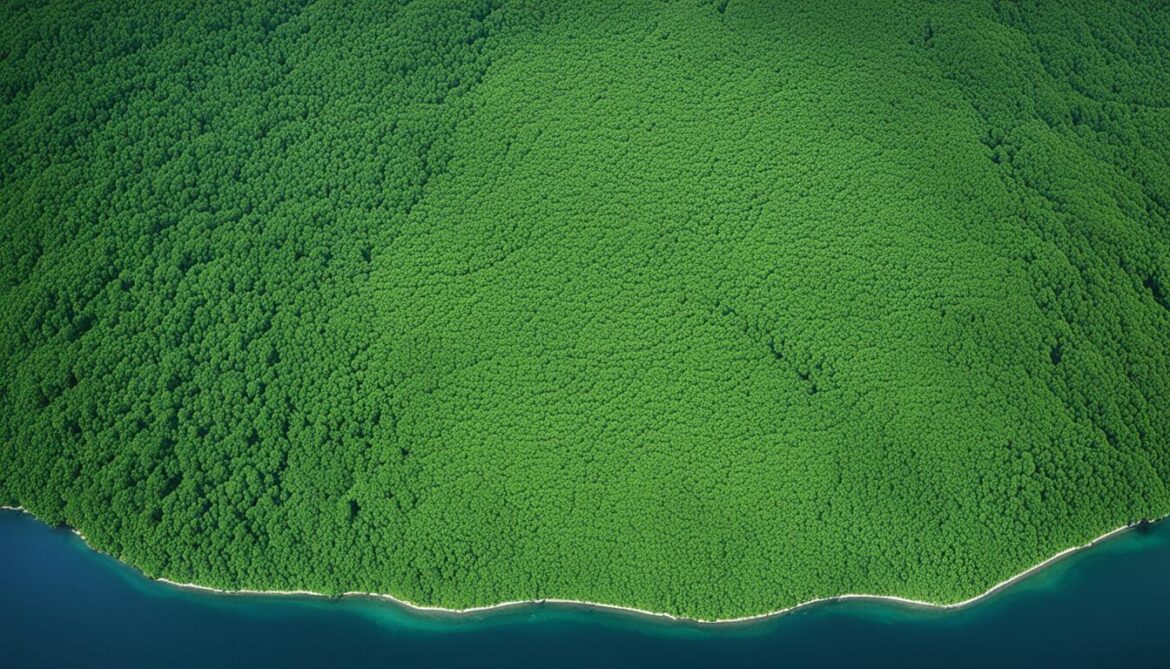
Ongoing research in Equatorial Guinea represents a collaborative effort between local and international scientists, working together to unlock the secrets of the country’s biodiversity. By combining expertise, resources, and knowledge, researchers are making significant contributions to the field of biodiversity conservation in Equatorial Guinea and beyond.
Conservation Initiatives in Equatorial Guinea
Equatorial Guinea is home to various organizations and initiatives that are actively engaged in conservation efforts. These initiatives are aimed at protecting the country’s rich biodiversity and promoting sustainable development practices, with a strong focus on community engagement.
The Bioko Biodiversity Protection Program is one such initiative that is making significant strides in conserving the biodiversity of Bioko Island. This program employs a multi-faceted approach that includes rigorous research, active involvement of local communities, and sustainable development initiatives. By integrating scientific knowledge with community engagement, the Bioko Biodiversity Protection Program ensures that conservation efforts are not only effective but also beneficial to the well-being of the local communities.
The World Wildlife Fund (WWF) is another prominent organization involved in conservation efforts in Equatorial Guinea. The WWF focuses on habitat protection, community-based conservation, and promoting sustainable livelihoods. By working closely with local communities, the WWF creates a sense of ownership and responsibility for biodiversity conservation, fostering a long-term commitment to sustainable practices.
“Conservation is not a standalone effort; it requires the active participation of local communities and the integration of sustainable development practices.”
These conservation initiatives recognize the significance of community engagement and sustainable development in achieving long-term conservation success. By involving local communities, these initiatives ensure that conservation efforts are based on indigenous knowledge and traditions, leveraging the invaluable contributions that local communities can make to biodiversity conservation. Moreover, by promoting sustainable development practices, such as eco-tourism and responsible resource management, these initiatives empower communities to actively participate in conservation efforts while improving their own livelihoods.
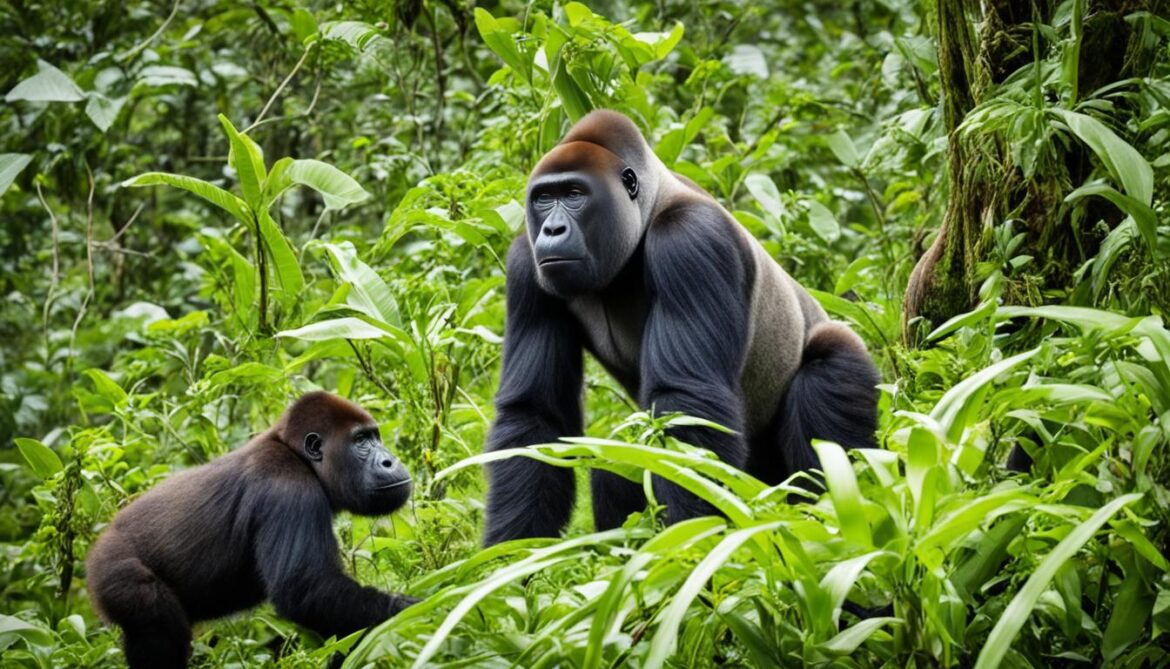
| Organization / Initiative | Focus Areas |
|---|---|
| Bioko Biodiversity Protection Program | Research, Community Engagement, Sustainable Development |
| World Wildlife Fund (WWF) | Habitat Protection, Community-Based Conservation, Sustainable Livelihoods |
Benefits of Conservation Initiatives in Equatorial Guinea
The conservation initiatives in Equatorial Guinea bring forth numerous benefits. By protecting the country’s biodiversity, these initiatives help preserve unique ecosystems and safeguard endangered species. They also contribute to ecological resilience, ensuring the long-term sustainability of the natural environment.
The active involvement of local communities in conservation efforts not only promotes the preservation of cultural heritage but also strengthens community resilience. By integrating sustainable development practices, these initiatives help create economic opportunities and improve livelihoods for communities living in and around protected areas. Additionally, they raise awareness about the value of biodiversity, fostering a deeper appreciation for the natural world and inspiring future generations to become stewards of the environment.
Importance of Sacred Natural Sites in Equatorial Guinea
Sacred natural sites hold immense value in Equatorial Guinea, playing a pivotal role in both cultural preservation and ecosystem conservation. These sites, revered and protected by local communities, hold spiritual significance and are deeply rooted in cultural traditions. With their association with ancestral spirits, cultural ceremonies, and traditional beliefs, these sacred locations form a vital link between cultural conservation and biodiversity conservation in Equatorial Guinea.
Preserving these sacred natural sites goes beyond safeguarding cultural identity; it also contributes to the maintenance of biodiversity and ecological balance. These sites often serve as havens for unique flora and fauna, safeguarding endangered species and maintaining the intricate relationships within ecosystems. By recognizing the immense value of these sacred locations, Equatorial Guinea can bridge the gap between cultural heritage and ecological conservation.
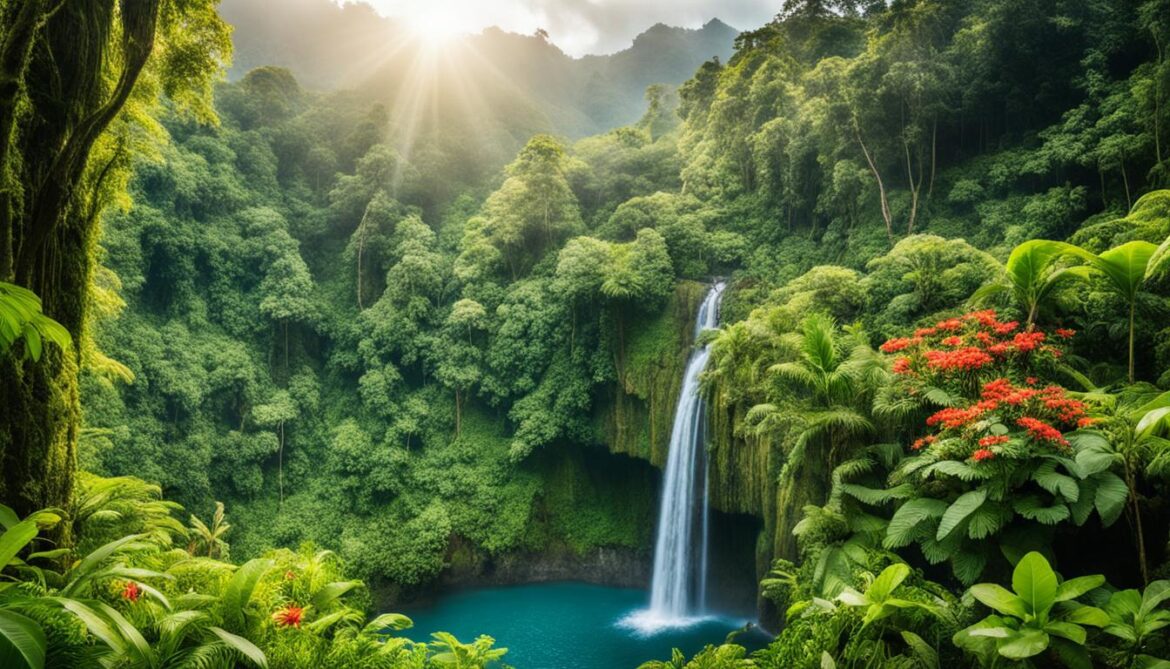
Challenges and Opportunities in Biodiversity Conservation
Biodiversity conservation in Equatorial Guinea encounters a range of challenges that require strategic intervention. Limited resources, political instability, and the need for capacity building pose significant obstacles to conservation efforts. Equatorial Guinea’s heavy reliance on natural resource exploitation further complicates the delicate balance between conservation and development goals, leading to potential conflicts.
However, amidst these challenges, there are promising opportunities for progress. Increased collaboration among local communities, non-governmental organizations (NGOs), and government agencies can foster a holistic approach to biodiversity conservation. By working together, these stakeholders can pool resources, knowledge, and expertise to implement effective conservation strategies.
The establishment of sustainable financing mechanisms is another avenue for promoting biodiversity conservation in Equatorial Guinea. With secure funding, conservation initiatives can be sustained over the long term, ensuring the preservation of critical habitats and species.
Furthermore, promoting ecotourism presents a unique opportunity to integrate conservation and economic development. By highlighting the country’s rich biodiversity and unique ecosystems, Equatorial Guinea can attract environmentally-conscious tourists, supporting both conservation efforts and local communities.
Finally, the integration of traditional knowledge into conservation efforts can enhance the effectiveness and cultural relevance of conservation initiatives. Incorporating indigenous practices and beliefs allows for a holistic and inclusive approach to biodiversity conservation in Equatorial Guinea.
In summary, while biodiversity conservation in Equatorial Guinea faces its fair share of challenges, there are tangible opportunities for progress. Through collaboration, sustainable financing, ecotourism promotion, and the integration of traditional knowledge, Equatorial Guinea can protect its unique natural heritage for future generations.
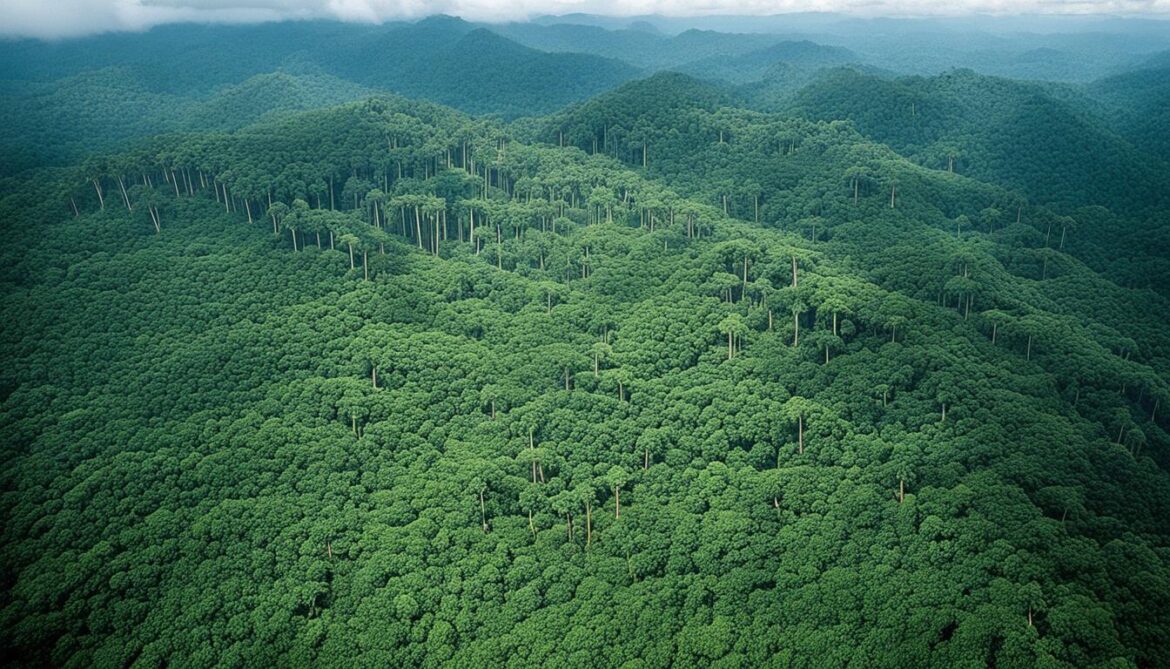
International Cooperation and Funding for Biodiversity Conservation
International cooperation and funding are essential for the successful conservation of biodiversity in Equatorial Guinea. The Critical Ecosystem Partnership Fund (CEPF), the World Bank, and the European Union are key organizations that provide crucial financial support for conservation projects in the country. These funding opportunities enable the implementation of conservation initiatives that address the pressing environmental challenges faced by Equatorial Guinea.
The collaboration between international and local organizations is instrumental in building capacity, exchanging knowledge, and promoting best practices in conservation. Through these collaborative efforts, expertise and resources are shared, leading to more effective conservation strategies. This international cooperation fosters a collective commitment to biodiversity conservation that goes beyond national boundaries.
Continued support and engagement from the international community play a pivotal role in ensuring the long-term preservation of Equatorial Guinea’s unique biodiversity. By mobilizing funding and sharing expertise, the international community can contribute significantly to the conservation and sustainable development efforts in the country.
The Role of the Critical Ecosystem Partnership Fund (CEPF)
The Critical Ecosystem Partnership Fund (CEPF) has been a key player in supporting biodiversity conservation in Equatorial Guinea. It has provided significant financial resources to local NGOs and organizations working on conservation projects. These funds have facilitated the establishment of protected areas, the development of community-led conservation initiatives, and research efforts to better understand and protect the country’s biodiversity.
The CEPF’s support has been instrumental in enabling Equatorial Guinea to implement conservation projects that address the root causes of biodiversity loss and contribute to the achievement of international conservation targets.
A Snapshot of Funding Organizations
| Organization | Description |
|---|---|
| Critical Ecosystem Partnership Fund (CEPF) | The CEPF is a global partnership that provides grants to local organizations for conservation projects. |
| World Bank | The World Bank supports sustainable development projects, including those focused on biodiversity conservation. |
| European Union | The European Union provides funding for a wide range of initiatives, including conservation projects in Equatorial Guinea. |

These organizations, among others, contribute significantly to the financial resources available for biodiversity conservation in Equatorial Guinea. Their funding enables the implementation of conservation projects and initiatives, such as habitat restoration, species protection, and community engagement.
Through the support of these organizations, Equatorial Guinea has the necessary funding to effectively address the threats to its biodiversity and implement sustainable conservation strategies.
Education and Awareness for Biodiversity Conservation
Educating and raising awareness about biodiversity is crucial for promoting conservation efforts in Equatorial Guinea. By increasing public awareness about the value of biodiversity, the importance of conservation, and the threats it faces, we can inspire individuals and communities to take action. These education and awareness initiatives also help highlight the strong connection between biodiversity conservation and sustainable development, emphasizing the role that each individual and community can play in protecting our natural heritage.
One of the key approaches to promoting biodiversity education is through engaging schools. By incorporating biodiversity topics into the curriculum and organizing field trips to protected areas or nature reserves, students can develop a deeper understanding of the importance of biodiversity and its conservation. Additionally, workshops and seminars can be conducted to train teachers on how to integrate biodiversity education into their lessons, ensuring a sustained and impactful approach to education.
Local communities are also vital stakeholders in biodiversity conservation. Outreach programs can be designed to raise awareness among community members, employing various communication channels such as community radio, storytelling sessions, and awareness campaigns. These initiatives can empower communities by providing them with the knowledge and tools necessary to actively participate in conservation efforts, fostering a sense of ownership and responsibility for their natural surroundings.
To reach a wider audience, public awareness campaigns can be carried out through television, radio, online platforms, and social media. These campaigns can showcase the beauty and importance of Equatorial Guinea’s biodiversity while highlighting the urgent need for conservation. Partnering with local celebrities, influencers, and conservation organizations can help amplify the message and generate greater public interest and engagement.
“Biodiversity education and awareness are essential for creating a connection between people and their natural environment. By empowering individuals and communities with knowledge, we can foster a sense of stewardship and inspire action for the conservation of Equatorial Guinea’s remarkable biodiversity.” – Dr. Ana Silva, Biodiversity Conservation Expert
Furthermore, collaborations between governmental agencies, non-governmental organizations (NGOs), and academic institutions can strengthen the impact of education and awareness initiatives. By combining resources, expertise, and networks, these partnerships can develop comprehensive programs that target different sectors of society, ensuring a multi-faceted approach to biodiversity education and awareness.
Examples of Education and Awareness Programs
| Program | Description |
|---|---|
| Biodiversity School Curriculum | Integration of biodiversity topics into school curriculum, providing students with comprehensive knowledge and understanding of biodiversity conservation. |
| Community Outreach Workshops | Workshops and training sessions conducted in local communities to raise awareness about biodiversity, conservation practices, and sustainable resource management. |
| Media Campaigns | Television, radio, online, and social media campaigns to reach a wider audience, showcasing the beauty of Equatorial Guinea’s biodiversity and promoting conservation awareness. |
| Partnering with Local Influencers | Collaborating with local celebrities, influencers, and conservation organizations to leverage their reach and influence to educate and engage the public. |
| Research and Field Trips | Organizing research projects and field trips for students and community members to protected areas and nature reserves, providing firsthand experiences of biodiversity. |
Through these education and awareness initiatives, Equatorial Guinea can nurture a generation of environmentally conscious individuals who appreciate the value of biodiversity and actively contribute to its conservation. By empowering communities, schools, and the wider public, we can work towards a sustainable future where biodiversity thrives, and Equatorial Guinea’s natural heritage is protected for generations to come.

Future Perspectives for Biodiversity Conservation in Equatorial Guinea
The future of biodiversity conservation in Equatorial Guinea holds great promise, but it also relies on addressing key challenges and seizing opportunities. Continued international cooperation, increased funding, and the integration of conservation into sustainable development agendas are pivotal factors for success.
To ensure the long-term preservation of biodiversity, it is crucial to tackle the root causes of its loss. This includes addressing poverty and promoting sustainable resource exploitation practices. Strengthening policy frameworks, improving law enforcement, and supporting community-led conservation initiatives are also essential steps in safeguarding Equatorial Guinea’s natural heritage.
Aligning biodiversity conservation efforts with the Sustainable Development Goals (SDGs) provides a comprehensive framework for action. By actively working towards achieving these global goals, Equatorial Guinea can forge a more sustainable and resilient future for its unique ecosystems and species.
The integration of biodiversity conservation and sustainable development lies at the heart of Equatorial Guinea’s future. By prioritizing the preservation of natural resources and promoting environmentally conscious practices, we can pave the way for a harmonious coexistence between people and nature. – Dr. María-Isabel Losada, Director of Equatorial Guinea Environmental Agency
Opportunities for Progress
While the challenges are significant, there are several opportunities to drive progress in biodiversity conservation. Increased collaboration between local communities, non-governmental organizations (NGOs), and government agencies can foster a collective approach to conservation. Sharing knowledge, resources, and best practices can amplify the impact of conservation efforts and facilitate effective decision-making.
Establishing sustainable financing mechanisms is another crucial opportunity. By investing in conservation and promoting ecotourism, Equatorial Guinea can generate income to support ongoing efforts and create economic incentives for local communities to engage in sustainable practices.
Engaging Local Communities
Engaging local communities is vital for the long-term success of biodiversity conservation. Recognizing the role of indigenous knowledge and traditional practices can cultivate a sense of ownership and stewardship. By involving communities in decision-making processes and empowering them as active participants, the conservation efforts can be tailored to local needs and priorities.
“Biodiversity conservation cannot succeed without the active involvement of local communities. Their deep connection to the land and their traditional knowledge are invaluable assets for sustainable development and the preservation of Equatorial Guinea’s rich natural heritage.” – Dr. John Mbaria, Conservation Scientist
Looking Ahead
The future of biodiversity conservation in Equatorial Guinea rests on the collective efforts of individuals, organizations, and governments. By embracing the Sustainable Development Goals, bolstering collaboration, and investing in research, education, and awareness, Equatorial Guinea can pave the way for a sustainable future.
Through unwavering commitment and innovative approaches, Equatorial Guinea can protect its unique biodiversity and ensure the well-being of its people and the planet for generations to come.
Conclusion
Biodiversity conservation in Equatorial Guinea is a complex and challenging task, but it is also a crucial endeavor for preserving the country’s unique natural heritage. The rich biodiversity and sacred natural sites provide valuable opportunities for both cultural and ecological conservation in Equatorial Guinea.
To ensure a sustainable future for these sacred natural sites and the diverse biodiversity they harbor, it is important to address the threats and challenges facing Equatorial Guinea. This involves implementing effective strategies to mitigate deforestation, unsustainable logging, hunting, and climate change.
Promoting community engagement and fostering international cooperation are vital for successful biodiversity conservation in Equatorial Guinea. By involving local communities in conservation efforts and working collaboratively with organizations and agencies around the world, Equatorial Guinea can develop comprehensive and impactful conservation initiatives.
Continued research, education, and awareness efforts are also essential for the long-term success of biodiversity conservation. By expanding our knowledge and understanding of Equatorial Guinea’s biodiversity and its significance, we can better inform conservation strategies and inspire a wider commitment to preserving the country’s unique natural heritage.







